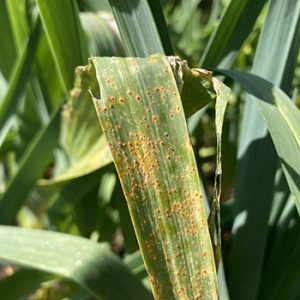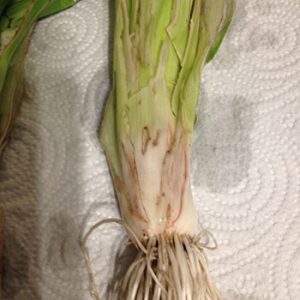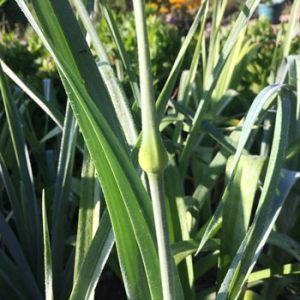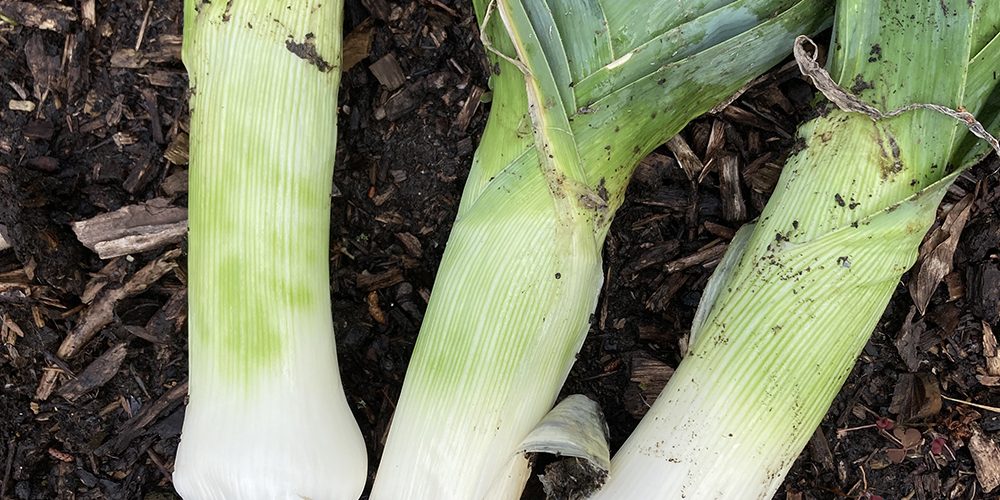You can harvest spring-planted leeks anytime from now onwards really, and for the most part they will stand in the soil well until you need them. There are one or two things to look out for…
 Check for signs of leek rust
Check for signs of leek rust
Leek Rust is a fungus that develops on the leaves of any alliums – leeks, onions, garlic – and it’s not uncommon, especially at this time of year. It often occurs in beds where plants are overcrowded or where the soil is rich in nitrogen. You’ll recognise it by the brownish orange streaks or spots on the leaves of leeks, onions and garlic (as pictured)
Once you see signs of leek rust on your leeks, don’t despair. You can still harvest your leeks and cook them – just peel off the affected leaves before you wash and chop them.
 Check for allium leaf miner
Check for allium leaf miner
The allium leaf miner fly lays its eggs on leeks, onions and other alliums. When the maggots hatch they eat little tunnels from the leaves, leaving a trail behind them.
There are two main hatchings each year, in early spring, and in late autumn. It is this late autumn hatching that causes most damage to leeks that are overwintering. Initially, you may see a line of white dots in the leaves. This is the first sign, and comes from the adult flies feeding on the plants before they lay eggs. The next sign you may see some of the leaves beginning to be ‘shredded’ – the work of the maggots. After that, you may see the small brown/red pupae tucked into holes in the leeks, and there may be visible leaf curling. Finally, the damaged parts of the leeks will begin to rot. If you catch it early, at the first sign, you can get away with harvesting the leeks and covering any that have been unaffected with mesh or fleece. If you don’t catch it until later, you are likely to lose the crop.
 Check for signs of bolting
Check for signs of bolting
As a general rule, leeks can be left in the ground over autumn and winter until you’re ready to eat them. However, if they are threatening to flower, think again….once a leek bolts, the inner flesh becomes very tough and virtually inedible. We have found before that we couldn’t even slice a bolted leek with a sharp knife, as the woody bit in the centre really was too hard.
If you have been unlucky and your leeks have bolted, (you’ll see a bud starting to form as pictured) harvest them as soon as possible, along with any other more mature leeks in your plot. When it comes to using them in the kitchen, we’d recommend slicing them down the middle lengthways and removing the middle woody bit (you can happily throw it on your compost pile). Then you can just use the outer bits which will be much more tender and perfectly fine, especially if you’re cooking them up for soup.

